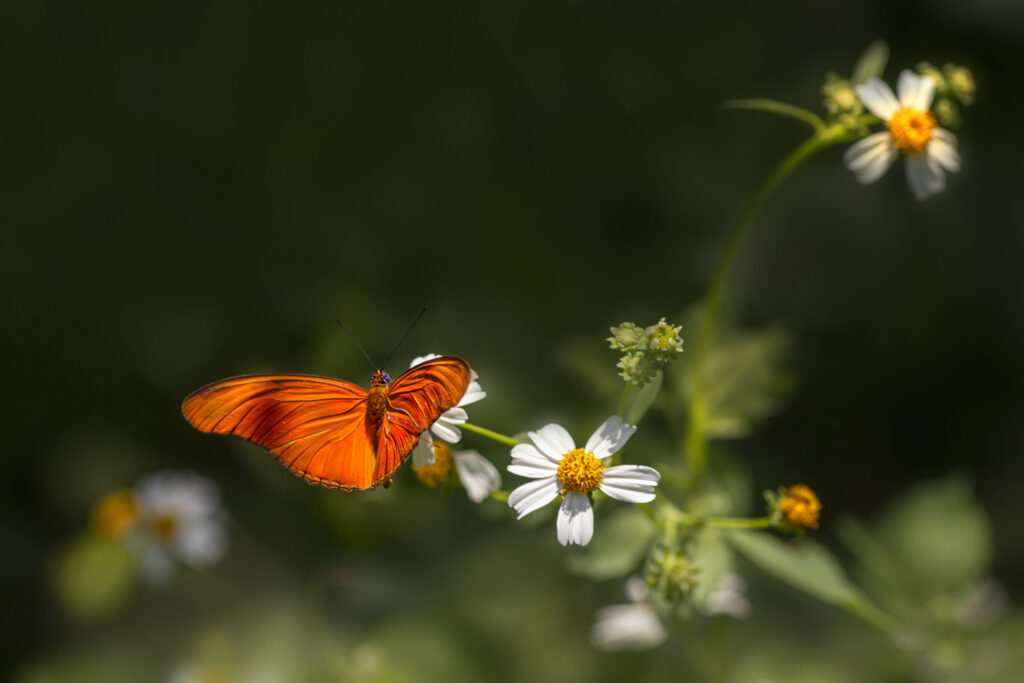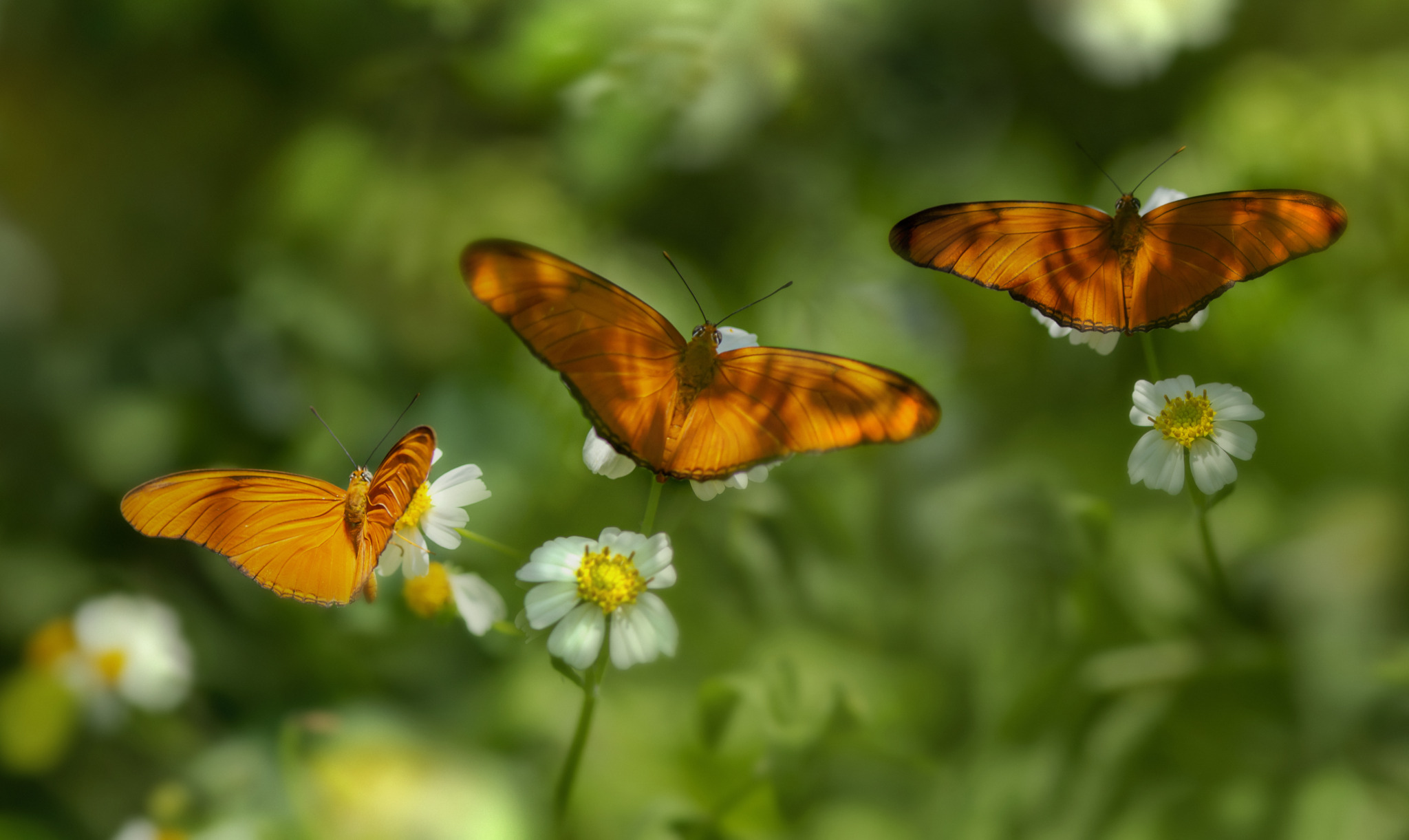
The Julia Heliconian (Dryas iulia), also known simply as the Julia butterfly, is a species of butterfly belonging to the Nymphalidae family. Here are some key points about the Julia Heliconian:
- Distribution: The Julia butterfly is native to the warm and tropical regions of Central and South America, including countries such as Mexico, Brazil, Ecuador, and Venezuela. It is also found in parts of the southern United States, particularly in Florida and Texas.
- Physical Description: The Julia butterfly is known for its striking and vibrant coloration. It has bright orange wings with black markings and borders, along with small white spots on the tips of its forewings. The underside of the wings is a duller orange color with black markings. Adult Julia butterflies have a wingspan of about 2.5 to 3 inches (6 to 7.5 centimeters).
- Habitat: Julia butterflies inhabit a variety of open and semi-open habitats, including tropical forests, woodland edges, scrublands, and gardens. They are commonly found in areas with abundant flowers, which provide nectar for feeding, as well as host plants for egg-laying and larval development.
- Diet: The Julia butterfly primarily feeds on the nectar of various flowering plants, including Lantana, Pentas, and other members of the Asteraceae and Verbenaceae families. As caterpillars, they feed on the leaves of passionflower vines (Passifloraceae), which serve as their host plants.
- Behavior: Julia butterflies are diurnal, meaning they are active during the daytime. They are strong and graceful fliers and can often be seen fluttering among flowers in search of nectar. Males are known to patrol territories and engage in aerial pursuits of females.
- Reproduction: Female Julia butterflies lay their eggs on the leaves of passionflower vines, which serve as the host plants for their caterpillars. The eggs hatch into caterpillars, which undergo several instars (growth stages) before pupating and emerging as adult butterflies. The entire lifecycle, from egg to adult, typically takes about 1 to 2 months.
- Conservation: The Julia butterfly is not considered threatened or endangered, and its populations appear to be stable. However, like many butterfly species, it may face localized threats such as habitat loss, pesticide use, and climate change. Conservation efforts aimed at preserving its habitats and protecting its host plants are important for ensuring the continued survival of the species.
Overall, the Julia Heliconian is a beautiful and iconic butterfly species of the tropical Americas, known for its vibrant colors and graceful flight. It plays an important role in pollination and contributes to the biodiversity of its native ecosystems.
Subscribe to the newsletter:
